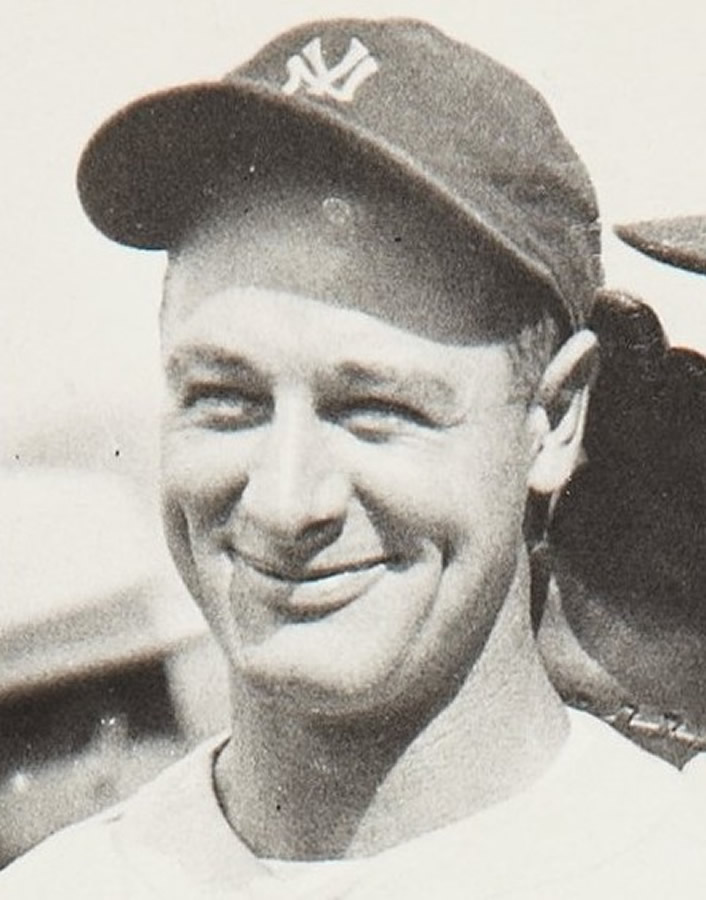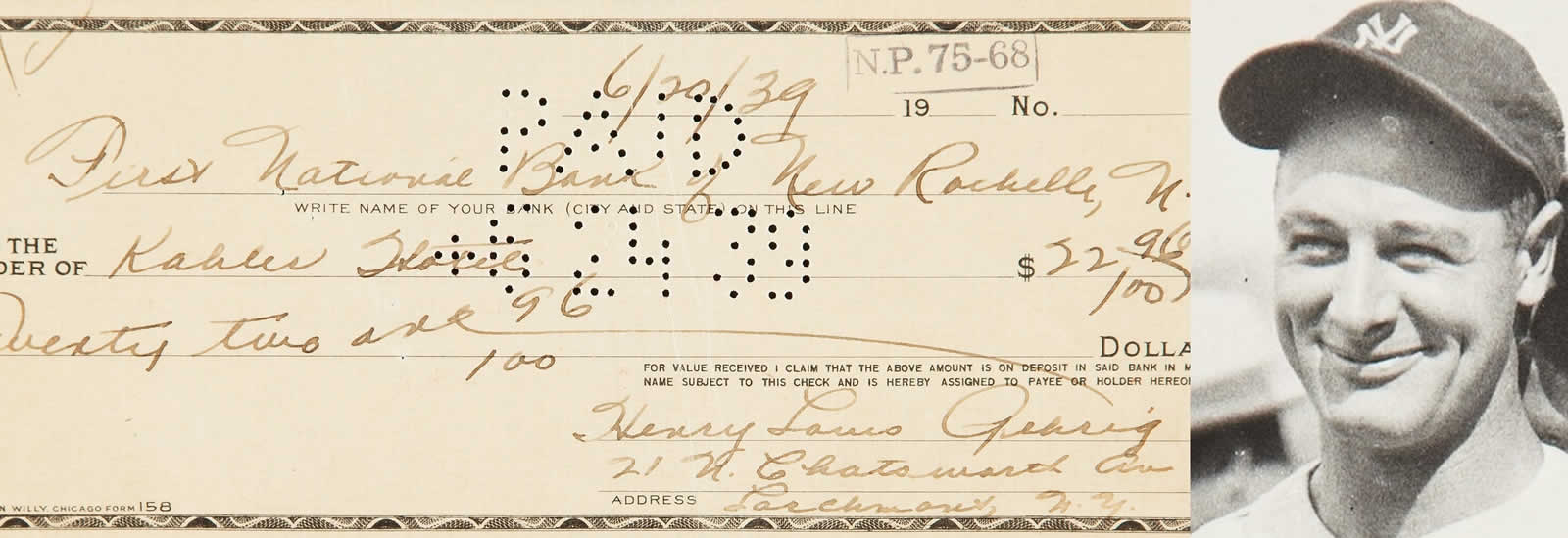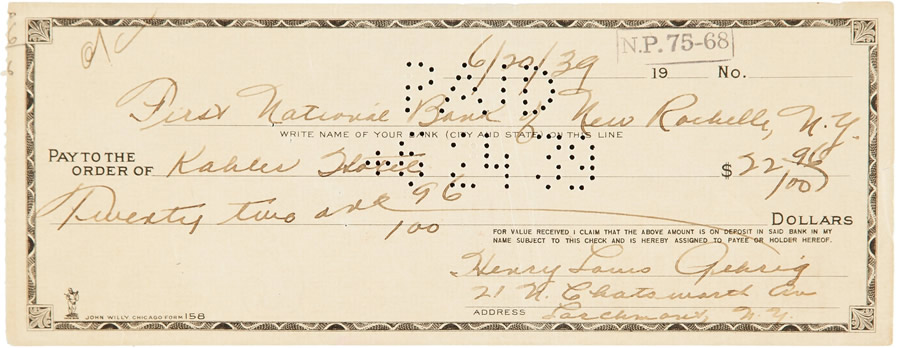GEHRIG-SIGNED CHECK DATES TO DAYS WHEN DIAGNOSIS ENDED FUTURE HALL OF FAMER’S CAREER
By Steve Lansdale
Writing a check – it’s a task that until the emergence of debit cards was as common as making coffee in the morning or checking the mail. Everyone did it.
Checks can have significant appeal as collectibles, almost always because of the name signed at the bottom. Sometimes, however, the circumstances in which a check was written can be as appealing as the signature it carries.
EVENT
SUMMER PLATINUM NIGHT SPORTS COLLECTIBLES CATALOG AUCTION 50029
Aug. 29-30, 2020
Online: HA.com/50029a
INQUIRIES
Chris Ivy
214.409.1319
CIvy@HA.com
Such is the case for a check signed in 1939 by baseball legend Lou Gehrig as his spectacular career came to an end. The check is being offered at Heritage’s upcoming Summer Platinum Night Sports Collectibles Catalog Auction.
Shortly after removing himself from the New York Yankees lineup after playing in a then-record 2,130 consecutive games, Gehrig headed to the Mayo Clinic in Rochester, Minn., where he underwent a battery of tests to solve the mystery of why his body was failing him. His stay at the Mayo Clinic culminated June 19 with the heartbreaking diagnosis that the player admired for his toughness and durability – earning him the nickname of the “Iron Horse” – had amyotrophic lateral sclerosis, an illness now known as Lou Gehrig’s disease.
While in Rochester, Gehrig stayed at the Kahler Hotel. Upon his departure, he settled his account with the offered check on June 20, just one day after he received the devastating diagnosis, and a day before he returned to New York to announce his retirement. A few weeks later, he stood before a packed stadium and delivered what some consider the most famous speech in the history of sports, telling the crowd that life had dealt him a “bad break,” but nevertheless declaring himself “the luckiest man on the face of the earth.”
Enlarge

“You have a representation of an athlete’s or figure’s writing or signature,” says the consignor, who wishes to remain anonymous. “That, in and of itself, is very desirable. But when a check can be pinpointed to an absolutely critical moment, that takes on an entirely different meaning. This check points precisely to one of the most challenging moments in Gehrig’s life – a chilling moment, within a 24-hour window of receiving a fatal diagnosis and returning home to address his Yankees teammates and announce his retirement from baseball to the world.”
The check is more than merely a bank note promising funds to a hotel with an athlete’s signature scrawled across the bottom. In this case, Gehrig included far more information than merely his autograph.
“This is very significant,” the consignor says. “One of the first things you notice is that he signed his full name – Henry Louis Gehrig – which you normally only see on legal documents, on contracts. But this also isn’t a pre-printed check. It is essentially a blank note that required him to fill out considerable personal information. That’s a somewhat mundane task, but it is extremely rare to get that kind of information – his address, the name of the bank – handwritten on an autographed item, especially from someone of Gehrig’s stature. Remarkably, under the circumstances, Gehrig’s famously graceful penmanship is unfailing.”
The appeal of the check quite possibly could extend far beyond collectors of baseball or Yankees memorabilia, the consignor says.
“This check is much bigger than that. As much a Gehrig is recognized as a great athlete, he also is recognized because we essentially renamed ALS ‘Lou Gehrig’s disease.’ The way he stood up and courageously battled the disease, the composure he showed – to a lot of people he’s known as much for that as he is for being a great baseball player.”
STEVE LANSDALE is a staff writer at Heritage Auctions.
This article appears in the Fall 2020 edition of The Intelligent Collector magazine. Click here to subscribe to the print edition.


